Be it just for fun or taking full control of your data, the idea of maintaining a dedicated home NAS for media streaming, file storage, and various other tasks gives you a whole new notion of freedom. Cutting the cloud tether is rather easy, thanks to plenty of excellent self-hosted options that house your documents and media library. But there’s one service that’s proven stubbornly tricky to replace — Microsoft 365, or the subscription-based variant of Microsoft Office to be precise.
Out of all Microsoft’s apps and services, Office is the one that people use the most religiously. Whether it’s the familiar interface, de-facto standard across home as well as enterprise environments, or seamless integration with OneDrive, Microsoft Office is a powerful one-stop-shop for everything productivity. Of course, several alternatives exist, but they are not optimized for collaborative editing or online deployment. If you’re looking for a true alternative to the online Microsoft 365 experience, where you can use a word processor or a spreadsheet directly in your browser without having to pay anything, then you can give Nextcloud Office a shot as your next self-hosting adventure.
Why Nextcloud Office
For years, Nextcloud has set the benchmark high when it comes to run-your-own Infrastructure as a Service (IaaS) on private clouds. The project has been around for quite some time, slowly building a vast tool repository to offer business users and individuals alike. The offerings are extremely scalable, which means you can even repurpose your old PC as a full-fledged NAS, and install Nextcloud there to utilize it as your personal office solution.
There’s no shortage of self-hosted office suites out there, many of which are very powerful in their own right. This is incredible, given they’re open-source, too. What makes Nextcloud Office special is its uncomplicated yet high-octane foundation. The core is powered by Collabora’s office suite, which itself is built on top of the LibreOffice codebase. In terms of deployment, you can choose from a myriad of hardware and platform-specific installation methods for extreme customization or just choose the ready-made package for a beginner-friendly route.
Once up and running, you’ll find a well-designed user interface that gives you access to tools for documents, spreadsheets, project management, and more. Nextcloud Office also allows you to share and collaborate with your documents and offers 100% compatibility with common Microsoft Office file formats such as DOCX, XLSX, and PPTX. Last but not least, you’ll be storing all of your documents on your own server, so you can automatically retain control over who sees what.
How to install Nextcloud Office
As mentioned earlier, the installation of Nextcloud’s office suite can be done in various ways. To make things simple, we’ll show you how to set up Nextcloud Office under Windows 11 with the help of Windows Subsystem for Linux (WSL) via containers. That way, you can evaluate it right from one of the best gaming PCs if required and don’t necessarily need to dip your toe into Linux-fu.
The target PC should have at least 8GB of RAM and 4 CPU cores, alongside hardware virtualization support. You might need more RAM if you install additional components. Usage of a solid-state drive (SSD) is highly recommended to avoid potential performance hiccups.
To self-host Nextcloud Office under Windows, you’ll need Docker. We will install Docker Desktop for Windows and pair it with WSL first. Next, we will fetch the Nextcloud All-in-One (AIO) package and configure it. The guide is tailor-made for traditional x64 computers, but power users can use it for Windows on Arm PCs as well after minor adjustments.
Before beginning, it’s worth thinking about what functionality you need your private office cloud to provide. In this guide, we’ll simply look at setting up Nextcloud Office as a local instance for testing. This is not meant for shared web hosting or a production-ready environment.
Install Docker for Windows
- Confirm that WSL2 is properly installed and can be executed without any issue.
- Grab the latest WSL2 Linux kernel update package and install it.
- Download the installer of Docker Desktop for Windows.
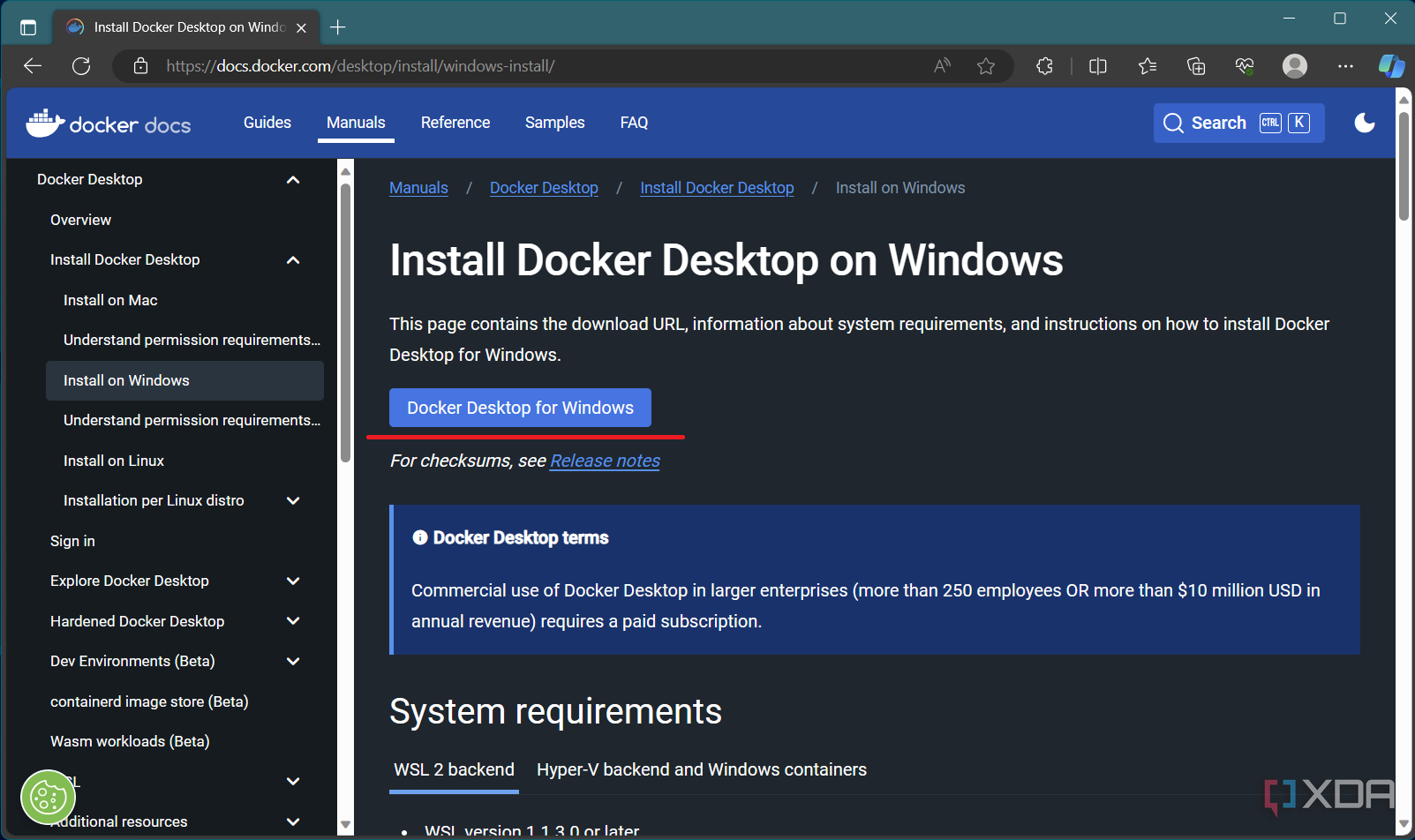
- Run the installer and make sure that WSL2 is preferred over Hyper-V. You might need to re-login/restart to make the changes take effect.
- Open the newly installed Docker Desktop app, accept the terms, and (optional) skip the tutorial prompt.
- If everything goes right, you should be ready to run your first container through Docker. We still need to toggle the autostart setting, though.
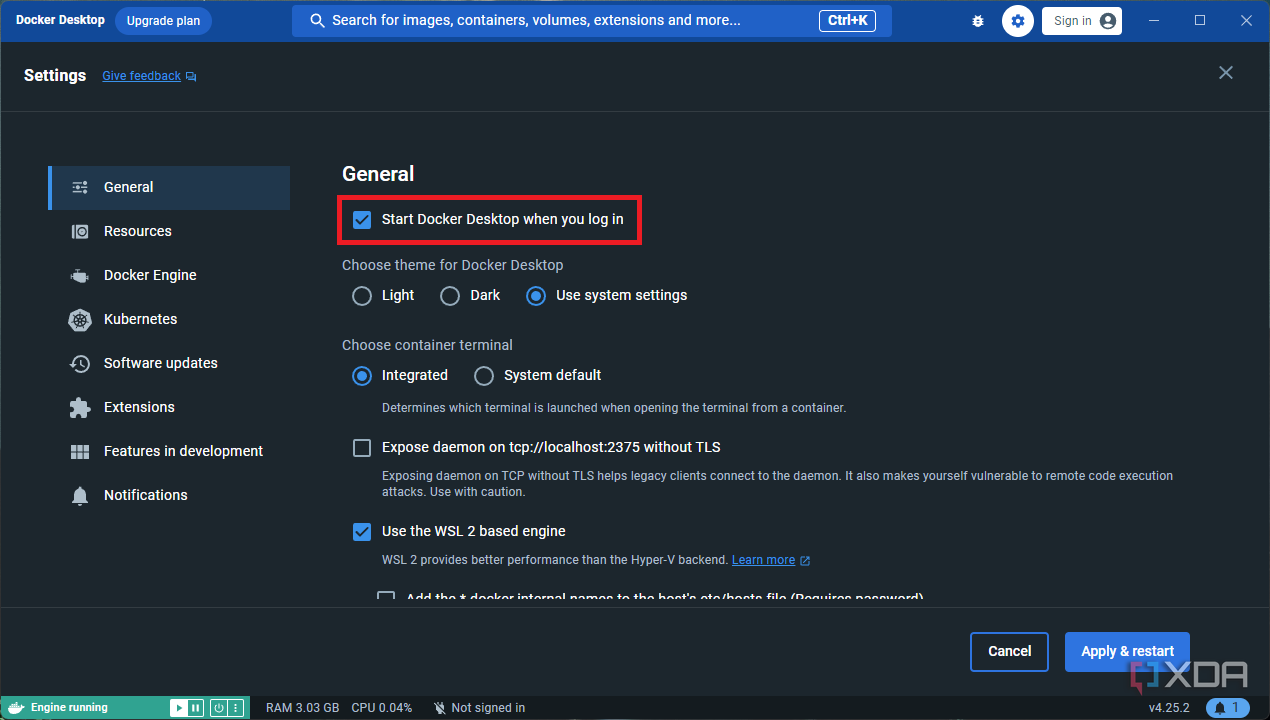
In case you are planning to deal with IPv6, then you should make the required changes at this stage. Otherwise, we are good to move to the next part of the tutorial.
Install Nextcloud AIO
Unlike Docker, there is no need to manually download a standalone installation package for Nextcloud AIO. Rather, we will use Docker’s built-in download functionality to grab the latest image from Docker Hub.
- Press the Windows + X key combo on your keyboard and select Terminal (Admin) to launch an elevated shell window. You may also use PowerShell or Command Prompt with elevated privileges if you prefer.
- Download and start Nextcloud AIO with the following command:
docker run ^
--sig-proxy=false ^
--publish 80:80 ^
--publish 8080:8080 ^
--publish 8443:8443 ^
--volume nextcloud_aio_mastercontainer:/mnt/docker-aio-config ^
--volume
-e NEXTCLOUD_DATADIR="/run/desktop/mnt/host/c/ncdata" ^
--env SKIP_DOMAIN_VALIDATION=true ^
nextcloud/all-in-one:latest
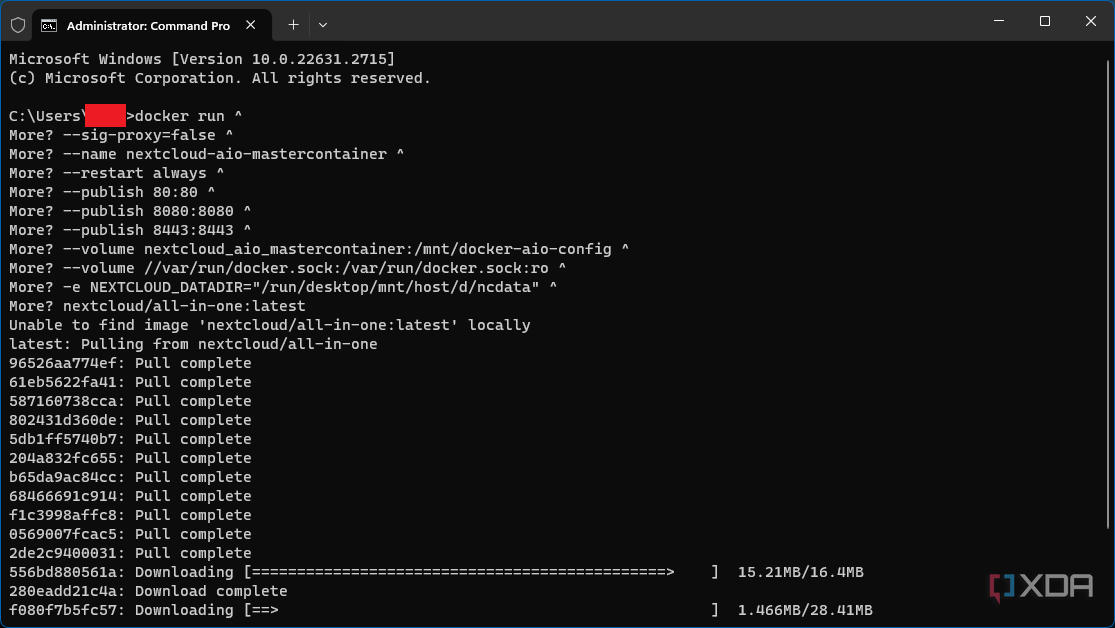
- The value of the NEXTCLOUD_DATADIR parameter is user-configurable. For instance, if you want to use D:nextcloudaiodata for storing the data, the string should be /run/desktop/mnt/host/d/nextcloudaiodata.
- As soon as you can see following text snippet on the console, fire up your browser and go to https://localhost:8080 to access the Nextcloud AIO setup wizard.
Initial startup of Nextcloud All-in-One complete!
You should be able to open the Nextcloud AIO Interface now on port 8080 of this server!
E.g. https: - Important: Jot down the password somewhere safe, then click on the button titled Open Nextcloud AIO login, and enter the same password.
- At the Nextcloud AIO dashboard, type in your desired domain name.
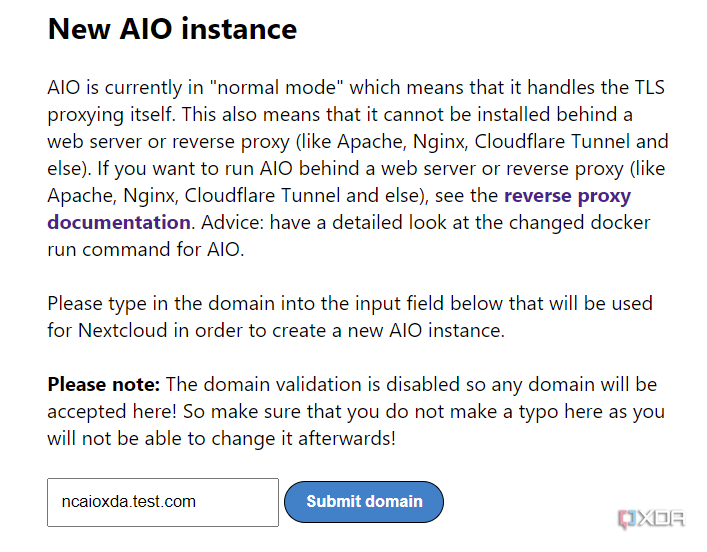
- Normally, the configuration wizard only allows a valid public domain as the input. However, we intentionally passed the SKIP_DOMAIN_VALIDATION as true in the second step, which means you can write any domain name and the wizard will accept it.
- Obtaining a valid SSL certificate for Nextcloud and using it locally need a few more steps, which are unfortunately beyond the scope of this tutorial. Nonetheless, you can take a look at Nextcloud’s documentation if you want to pursue that route.
- Provided everything has been configured correctly, the wizard will move to the next step and allow you to install optional containers. At this stage, make sure to put a checkmark for the Collabora (Nextcloud Office) entry. You can also adjust the timezone here.
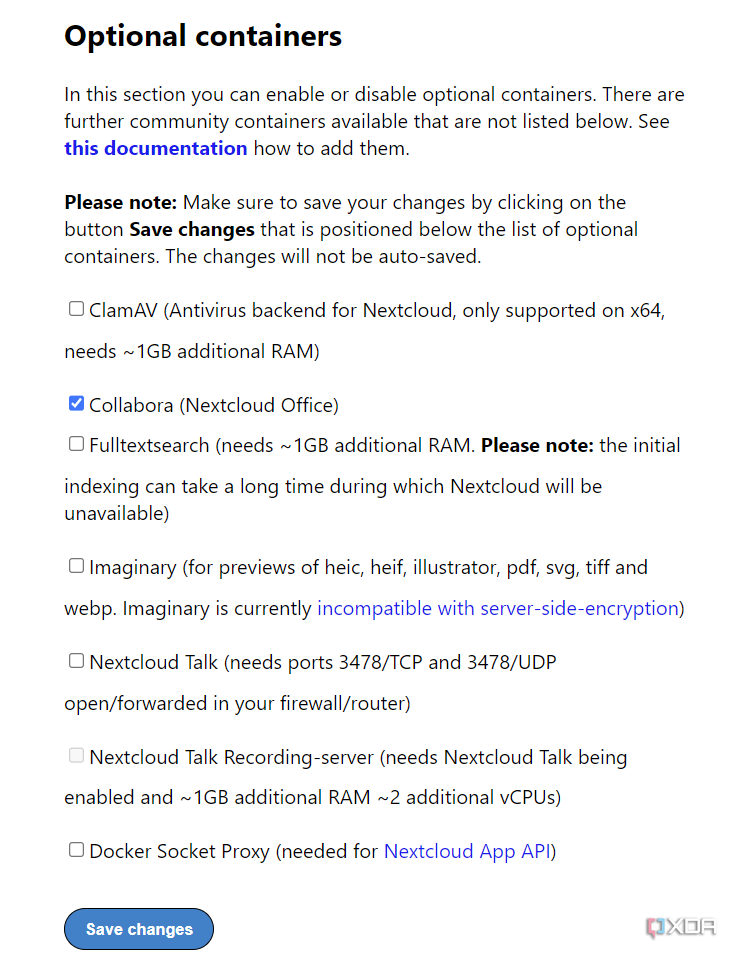
- Save and the changes, then click on Start containers button in order to download and start them. Depending on your internet speed, it might take a while to get rid of the waiting spinner animation.
- You can see the current status of the containers in the configuration wizard.
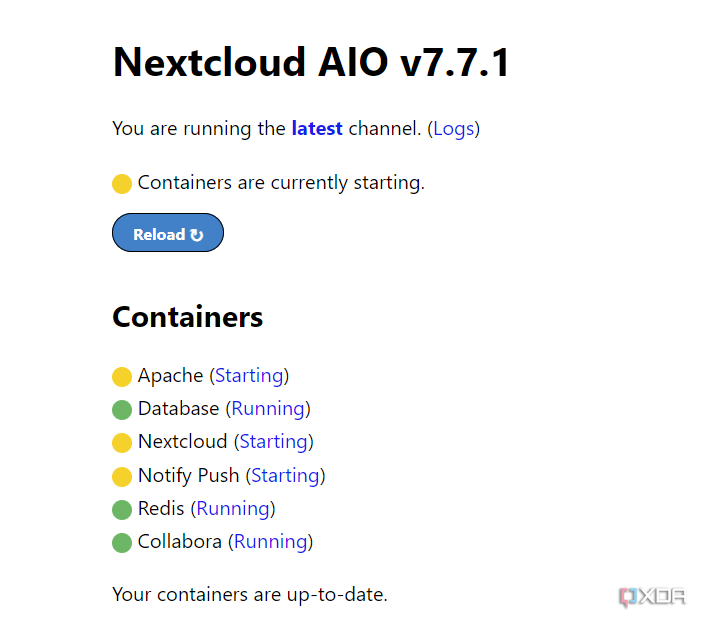
- When everything is done properly, the wizard will prompt you to redirect to your shiny new Nextcloud instance and log in with the given admin credentials.
- From the dashboard, navigate to the Files tab, and you should be able to create a new office document (or open existing documents) using Nextcloud Office.
If you want to access the office suite from your smartphone or tablet, use the official mobile client(s) and point them to the domain name/IP address of the Nextcloud instance you just created.
The iOS/iPadOS client can be downloaded from here.
Summary
Nextcloud Office is a powerful open-source office suite which you can host on your own. It lets you take control over your document creation flow and collaborate with others without relying on a third-party service. The personal data of users won’t be tracked across the web.
You can update to future Nextcloud Office versions (as well as other container components) by pressing Stop containers and subsequently Start and update containers from the AIO interface. On the other hand, if a new master container update has been found, an additional section below the containers section will pop up. In that case, you can simply press on the corresponding button to update the container. This will update your running server instance to match the latest Nextcloud AIO image published to Docker Hub.
** (Disclaimer: This video content is intended for educational and informational purposes only) **
More...